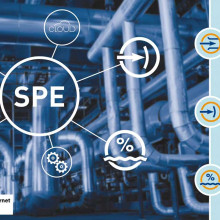In our article we highlight the latest developments and technologies in the Temperature measurement and regulation, including Thermocouple, thermometer, thermostat and temperature sensor. Learn how these instruments are used in various industries to ensure precision and efficiency in temperature monitoring.
In 1821, Thomas Johann Seebeck discovered the thermoelectric effect, also known as the Seebeck effect, which uses the temperature-dependent voltage of metallic conductors and forms the basis for the development of thermocouples.
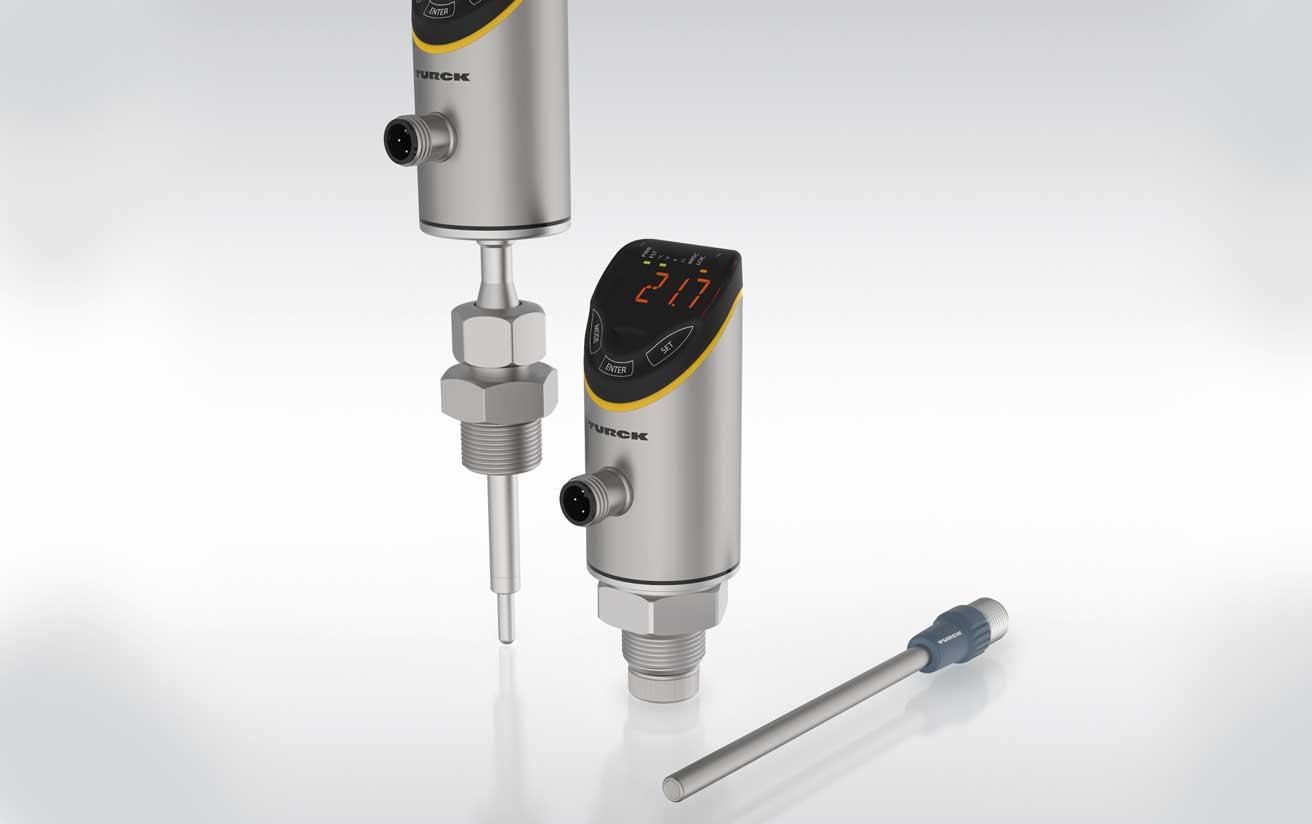
Contents
- Plug-and-play temperature sensor for IIoT
- Redundant thermocouple with a lifespan of 25 years
- Diverse temperature measurement with IO-Link at just one measuring point
- What does a thermocouple do?
- What is a Type K thermocouple?
- How do thermocouples generate electricity?
- Is a Pt100 a thermocouple?
Plug-and-play temperature sensor for IIoT
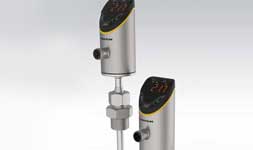 09.12.2020 | Turck extends his fluid sensors-Products around IO-Link capable temperature sensors for the flexible and reliable measurement of process temperatures. Compact devices are available with an integrated temperature sensor (TS700) as well as evaluation electronics and display units (TS720) for connecting resistance thermometers or thermocouples, the design of which highlights the structure and construction of these thermocouples and the configuration of the sensor, which influences the response time.
09.12.2020 | Turck extends his fluid sensors-Products around IO-Link capable temperature sensors for the flexible and reliable measurement of process temperatures. Compact devices are available with an integrated temperature sensor (TS700) as well as evaluation electronics and display units (TS720) for connecting resistance thermometers or thermocouples, the design of which highlights the structure and construction of these thermocouples and the configuration of the sensor, which influences the response time.
The thermocouples use two wires made of different metals that are connected to form a sensor; When one side is heated or cooled, a voltage is created that is proportional to the temperature. This mode of operation is based on the thermoelectric effect, which allows temperature measurement through the relationship between temperature and generated voltage. In addition, there are a variety of thermocouple types available for different industrial applications, each with specific characteristics such as temperature range, material composition and uses in different industries, making selecting the right thermocouple type for specific measurement tasks essential.
Redundant thermocouple with a lifespan of 25 years
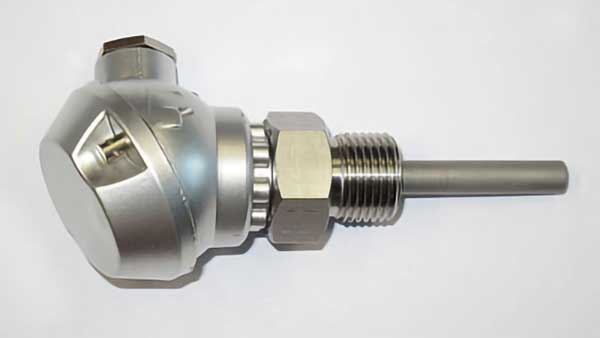 10.12.2019/XNUMX/XNUMX | For the Remote monitoring | effect Ephy measurement an Temperature sensor developed, for example, in mining systems, on motors for excavators, vans and elevators or on offshore wind turbines up to cable cars for surveillance security. Wherever the temperature can be measured absolutely reliably at exposed points, it bears temperature sensor contributes to measurement reliability. Lead wires connect these thermocouples to measuring devices, with the properties of the copper leads crucial to the accuracy of the voltage output, which is based solely on the temperature difference between the connection points.
10.12.2019/XNUMX/XNUMX | For the Remote monitoring | effect Ephy measurement an Temperature sensor developed, for example, in mining systems, on motors for excavators, vans and elevators or on offshore wind turbines up to cable cars for surveillance security. Wherever the temperature can be measured absolutely reliably at exposed points, it bears temperature sensor contributes to measurement reliability. Lead wires connect these thermocouples to measuring devices, with the properties of the copper leads crucial to the accuracy of the voltage output, which is based solely on the temperature difference between the connection points.
By maintaining a widespread design and using common dimensions, this temperature sensor can often be installed without mechanical changes, for example to existing bearings or gears. What is new is in contrast to usual CMS systems, where an error signal has to be found out from a large amount of data extra signal output. This provides a clear display in the event of an error.
The temperature difference between the measurement and reference points is critical to precise temperature measurement with thermocouples, with devices such as monitoring instruments and comparators contributing to safety and accuracy in industrial settings.
The one in the sensor head integrated electronics periodically checks both temperature sensors installed in the same housing for functionality. In the event of a failure, the electronics switch to the existing reserve sensor. At the same time, a fault message is output via the separate signal output. The use of a current loop with output 4 ... 20 mA excludes that it is e.g. B. is only a false report caused by external interference. Malfunctions are not generated even at low temperatures.
 Whisper-quiet elevator brake secures elevators and escalators
Whisper-quiet elevator brake secures elevators and escalators
The sensor is with the Measuring range -40 ° to +110 ° C and specified for ambient temperatures from -40 ° to +65 ° C. It meets protection class IP65 as well as the EMC guidelines EN 61326-1: 2013 and EN 61326-2-3: 2013. Ephy-Mess specifies the service life under the maximum permissible ambient temperature as more than 25 years.
use cases of Temperature Sensors can also be found in oil production, in the petrochemical industry, in cement works, iron works or in pumping stations as well as hydroelectric power plants and building automation.
Diverse temperature measurement with IO-Link at just one measuring point
 May 23.05.2019, 100 | The “Dicotemp XNUMX” is a smart fitting from Jumo, with which diverse temperature measurement can be realized with a thermostat or dial thermometer and a platinum chip temperature sensor at just one measuring point. About one transmitters The resistance signal is converted into an analog or digital signal.
May 23.05.2019, 100 | The “Dicotemp XNUMX” is a smart fitting from Jumo, with which diverse temperature measurement can be realized with a thermostat or dial thermometer and a platinum chip temperature sensor at just one measuring point. About one transmitters The resistance signal is converted into an analog or digital signal.
With the new solution, users can continue to use devices that are already installed in the process at the same measuring point and at the same time have an electrical one Temperature measurement expand. The combination of a platinum chiptemperature sensors with a thermostat or dial thermometer in a fitting significantly reduces the planning and installation effort.
The fitting consists of Stainless Steel and is available in different connection types: for screwing in or for plugging into a smooth pipe. The installation length varies between 65 and 300 mm depending on customer requirements. The thermal system can be used at process temperatures between -40° and +260°C.
Via an industry standard M12 connector becomes a Resistance signal transmitted. Using cablemeasuring transducer Additional output signals can be forwarded analogue (4 to 20 mA) or digital (IO-Link), which guarantees flexible data use. A variety of variants arises from the use of different device types, platinum sensors and sensor and immersion sleeve diameters.
The Seebeck effect, a fundamental aspect of thermoelectrics, describes the generation of a temperature-dependent voltage when two different metallic conductors are exposed to a temperature difference, which is essential for the functioning of thermocouples is crucial. The ends of the thermocouples, where the different metals are connected, play a central role in temperature measurement because this is where the thermal voltage is generated.
Thermocouples, including the widely used Type K thermocouple, offer a wide range of temperature measurement solutions, with each thermocouple consisting of specific material combinations suitable for different temperature ranges and applications.
Thermocouples and thermocouples are known for their simple construction, cost-effectiveness and wide applicability over a wide range of temperatures, with thermoelectric voltage playing a crucial role in precise temperature measurement.
What is a Type K thermocouple?
An Type K thermocouple, also known as nickel-chromium-nickel thermocouple, is a widely used temperature sensor used in various industrial applications due to its high accuracy and wide measurement range from -200 to +1350°C.
It consists of two different metals (nickel-chrome and nickel) connected at one end.
When the junction is exposed to temperature, a thermoelectric voltage is created that is proportional to the temperature difference between the hot and cold junctions. This voltage can then be measured and used to calculate temperature. The Type K thermocouple is particularly valued for its robustness and reliability at high temperatures as well as its compatibility with electronic devices.
How do thermocouples generate electricity?
Thermocouples generate electricity through the so-called Seebeck effect, a phenomenon that occurs when two dissimilar metals or semiconductors are connected at their ends and a Temperature difference exists between these connections.
This configuration results in thermal energy being converted into electrical energy. At the hot junction, electrons move from one material to another, creating an electrical voltage. This voltage is measurable and becomes stronger the greater the temperature difference between the two junctions of the thermocouple.
This property makes thermocouples an indispensable tool in temperature measurement and monitoring in numerous technical and industrial applications, from process control to quality assurance.
An Pt100 is not a thermocouple, but a temperature sensor based on the principle of the platinum resistance thermometer.
The Pt100 sensor uses platinum, a metal whose electrical resistance changes with temperature, and measures temperatures by precisely monitoring this resistance. The Pt100 is characterized by its high accuracy and stability over a temperature range of -200 °C to +850 °C, making it particularly suitable for applications where precise temperature control is required.
In contrast, thermocouples generate a voltage due to a temperature difference between two different metals. This illustrates the differences in functionality and application between resistance thermometers such as the Pt100 and thermocouples.
Source: This article is based on information from the following companies: Jumo, Ephy-Mess, Turck.
You might also be interested in...
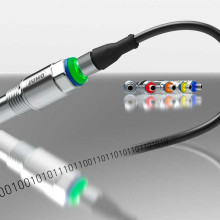
Level sensor | Level switch for simple to IIoT use
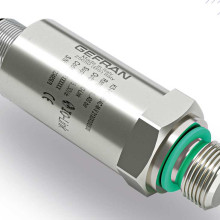
Pressure sensors | Pressure measurement technology goes digital

Control Fair 2024 | The industry is already looking forward to Stuttgart
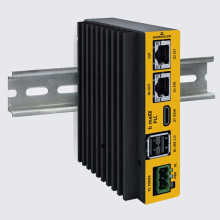
PLC | The programmable logic controller

Temperature sensor | IO-Link and combined measured variables
